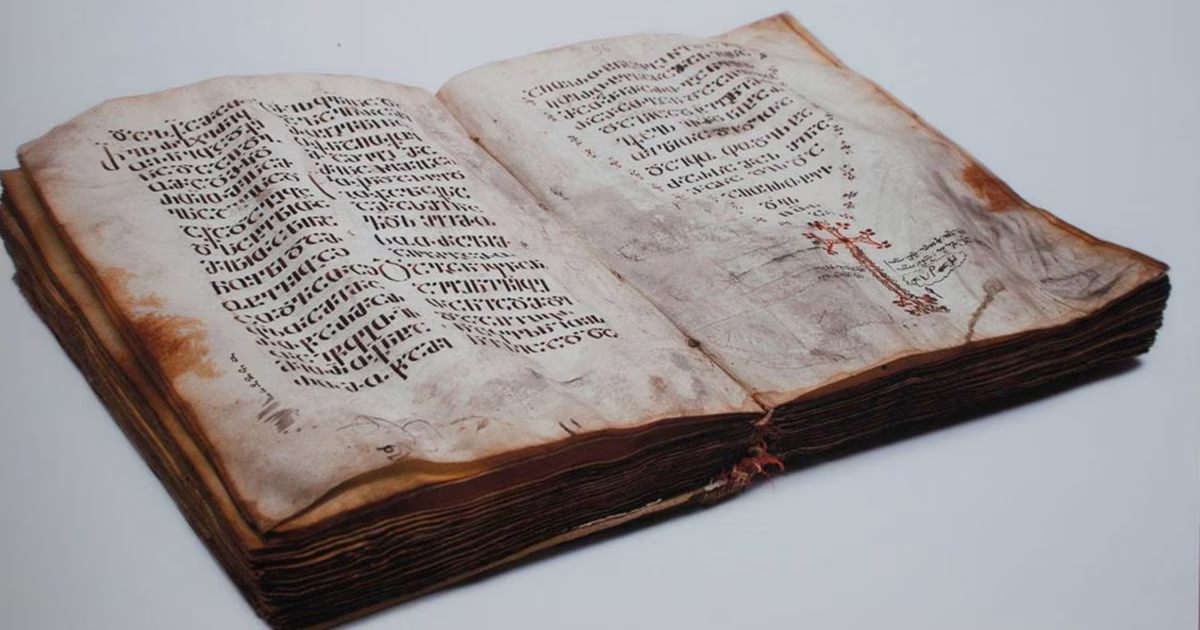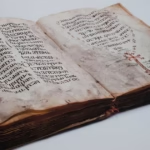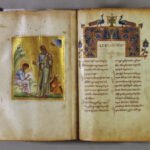The Three Scripts of Georgia
Modern Georgia uses one official script — Mkhedruli, but historically, the Georgian written tradition includes three distinct scripts:
- Asomtavruli – The oldest script, developed between the 5th and 7th centuries, used mainly for monumental inscriptions. With its rounded, monumental forms, it represents the roots of the Georgian literary heritage.
- Nuskhuri – Emerged in the 9th century and was primarily used in religious manuscripts. It was often written together with Asomtavruli (used for capital letters), forming the unified ecclesiastical script known as Khutsuri.
- Mkhedruli – First appearing in the 10th century, Mkhedruli became the dominant script by the 11th century and remains the standard for all modern secular writing in Georgia.
Today, Asomtavruli and Nuskhuri are still used in the liturgical texts of the Georgian Orthodox Church, making Georgia one of the few countries with an actively preserved multi-script legacy.
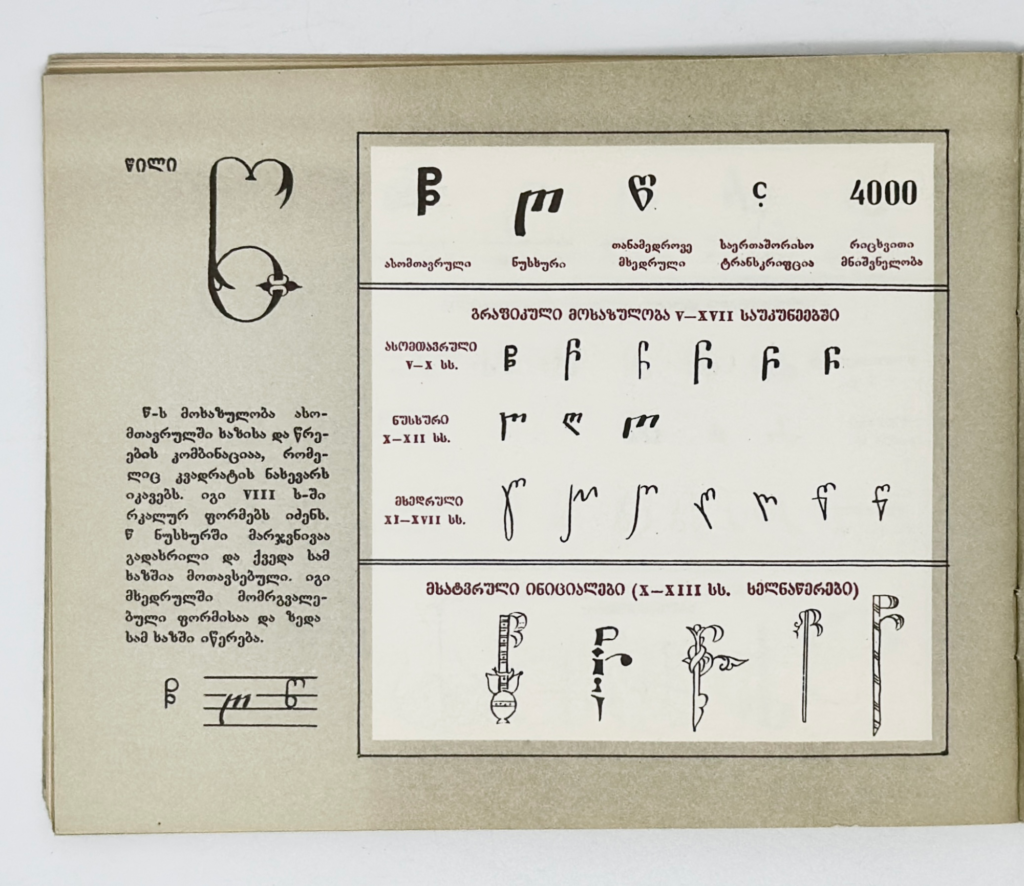

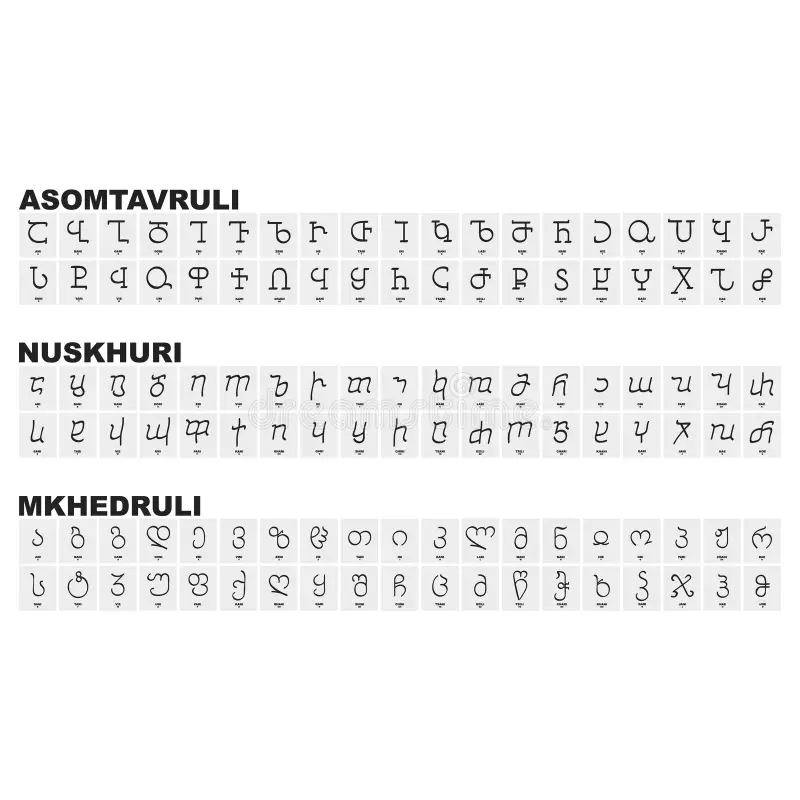
Cultural and Linguistic Influences
Despite centuries of interaction with empires like Persia, Byzantium, and the Ottomans, Georgian script and language developed independently. While superficial visual parallels exist between Asomtavruli and ancient Greek or Aramaic scripts, Georgian writing is entirely original in phonetics, structure, and aesthetic.
The alphabet was crafted specifically to represent the unique phonology of the Georgian language. It was not borrowed or adapted from another script — a rarity in the history of global writing systems.
What Makes the Georgian Language Unique
- Three distinct scripts, all part of a continuous written culture and recognized by UNESCO as a “living cultural heritage.”
- A phonemic alphabet with 33 letters, each representing a unique sound, making Georgian orthography exceptionally precise and learner-friendly.
- Visually elegant: Mkhedruli has a unicameral design — no distinction between upper- and lowercase — creating a fluid and balanced appearance.
- No grammatical gender: Unlike many Indo-European languages, Georgian does not distinguish between masculine and feminine forms. A person is simply a person, regardless of gender — a feature that makes the language naturally gender-neutral and inclusive.
- Rich verbal system: Georgian grammar is highly complex, featuring split ergativity, polypersonal verb agreement, and multiple verb screeves (tense-aspect-mood forms). These characteristics make it both challenging and fascinating to linguists.
- Unique root system: Georgian often uses root-stem constructions rather than borrowed vocabulary, preserving its linguistic independence despite centuries of foreign rule.
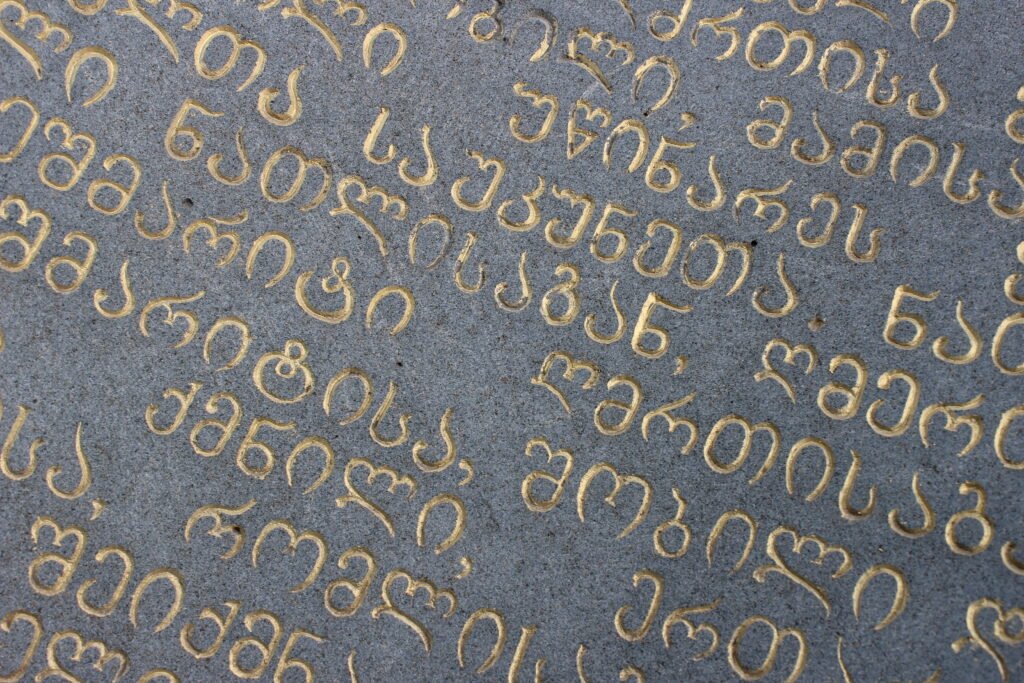
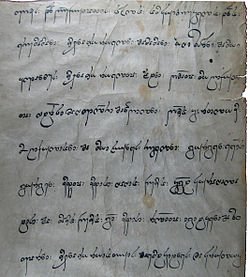
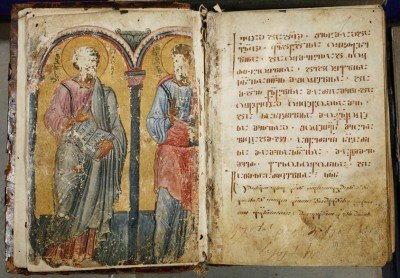
Why This Matters
Georgia’s scripts and language are more than tools of communication — they are expressions of cultural survival, innovation, and identity. Few countries can claim a writing system that is not only original but still used in multiple historical forms.
To study Georgian is not just to learn a language, but to step into one of the oldest, most resilient cultures in the world, whose alphabet is not derived from Latin, Cyrillic, or Arabic — but entirely its own.

